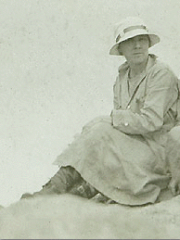Maria do Carmo Bandeira

Doña María do Carmo Bandeira was a botanist with the Jardim Botanico de Rio de Janeiro, specializing on mosses. She served on the editorial board of its Arquivos do Jardim Botanico do Rio de Janeiro. In the late 1920s, she established a correspondence with Mary Agnes Chase, curator of grasses in the U.S. National Museum. They exchanged plant specimens and stories of their field trips. When Chase visited Brazil in 1929, Bandeira hosted the visiting botanist and traveled with her on Chase's field excursions. They climbed to the peak of Mt. Itatiaia in Macieras, and amassed large collections during Chase's visit.
Among the few women botanists of their era, Chase and Bandeira had great sympathy for one another and a close bond as colleagues. When Bandeira traveled to Europe, Chase provided her with introductions to noted botanists, especially women botanists. They remained correspondents until Bandeira left Brazil during the revolution of 1930 and accepted a position studying the protoplasm of mosses in Dr. Louis E. Lapicque's physiology laboratory at the Sorbonne in Paris in 1931. She later entered the convent and ceased her work as a botanist.
Related Collections
- Mary Agnes Chase correspondence and notes documenting her research on grasses in Brazil and Puerto Rico, c. 1924-1941, Smithsonian Institution Archives
